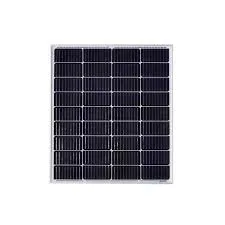monocrystalline solar panel dimensions
Understanding Monocrystalline Solar Panel Dimensions
As the world shifts toward renewable energy sources, solar power has emerged as one of the most efficient and sustainable options available. Among the various types of solar panels, monocrystalline solar panels are particularly popular for their high efficiency and space-saving characteristics. A vital aspect of choosing the right solar panel for your needs is understanding its dimensions. This article will explore the typical dimensions of monocrystalline solar panels, how they are categorized, and the implications of these dimensions for installation and energy generation.
What Are Monocrystalline Solar Panels?
Monocrystalline solar panels are made from a single continuous crystal structure, which sets them apart from polycrystalline panels that are made from multiple crystal fragments. This manufacturing process results in a higher purity of silicon, translating to higher efficiency rates—typically around 15% to 22%. Moreover, these panels are known for their longevity and better performance in low-light conditions.
Standard Dimensions of Monocrystalline Solar Panels
The dimensions of monocrystalline solar panels can vary based on the manufacturer and specific model. However, the most common sizes for residential applications are framed panels measuring approximately 65 inches by 39 inches (about 1.65 meters by 1 meter) with a thickness of around 1.4 inches (approximately 3.5 cm). These panels usually have a power output ranging from 300W to 370W per panel, making them suitable for various energy needs.
While the standard dimensions are often used, larger commercial panels can also be found. For instance, some industrial-sized panels may measure around 78 inches by 39 inches (approximately 2 meters by 1 meter) and offer even higher wattage outputs. The choice of panel size will often depend on the space available for installation and the energy needs of the user.
Impact of Dimensions on Installation
The dimensions of monocrystalline solar panels play a crucial role in the installation process. Homeowners must assess the available roof space, angle, and orientation when determining how many panels can fit and optimize energy production. The compact size of monocrystalline panels allows for more panels to be installed in smaller areas compared to thicker polycrystalline panels, enhancing their appeal for urban environments where space is limited.
monocrystalline solar panel dimensions

How Dimensions Affect Energy Production
The size of a solar panel directly impacts its energy output. Larger panels can generate more electricity, but the efficiency per square meter remains a crucial factor. Monocrystalline panels are typically more space-efficient, meaning they produce more power per unit area compared to other types. This characteristic enables homeowners with limited roof space to maximize their energy production.
Moreover, the positioning and spacing of the panels need to be carefully considered based on their dimensions. Adequate space should be left between panels to avoid shading and to allow for maintenance. A well-planned layout that takes dimensions into account will help enhance their performance and ensure longevity.
Choosing the Right Size
When considering installing monocrystalline solar panels, it's essential to evaluate your energy needs and available space. Homeowners should start by calculating their average energy consumption to determine how many panels are required. Next, measure the available roof space to see which panel dimensions fit appropriately, taking into account the permissible mounting options.
It's also advisable to consult with solar installation professionals who can provide personalized recommendations based on the specific dimensions of the panels and your energy objectives. They can assist with selecting the most suitable panel sizes and configurations while ensuring compliance with local regulations and standards.
Conclusion
In summary, the dimensions of monocrystalline solar panels are a critical factor that influences their efficiency, installation, and energy output. With standard dimensions for residential applications typically around 65 inches by 39 inches, these panels are designed to maximize energy production in a compact format. By understanding these dimensions and their impact on installation and energy requirements, homeowners can make informed decisions and contribute to the growing movement towards sustainable energy solutions. As technology advances, we can expect even more efficient and compact solar panel designs to enter the market, further enhancing the potential of solar energy.
-
Unlocking Energy Freedom with the Off Grid Solar InverterNewsJun.06,2025
-
Unlock More Solar Power with a High-Efficiency Bifacial Solar PanelNewsJun.06,2025
-
Power Your Future with High-Efficiency Monocrystalline Solar PanelsNewsJun.06,2025
-
Next-Gen Solar Power Starts with Micro Solar InvertersNewsJun.06,2025
-
Harnessing Peak Efficiency with the On Grid Solar InverterNewsJun.06,2025
-
Discover Unmatched Efficiency with the Latest String Solar InverterNewsJun.06,2025







